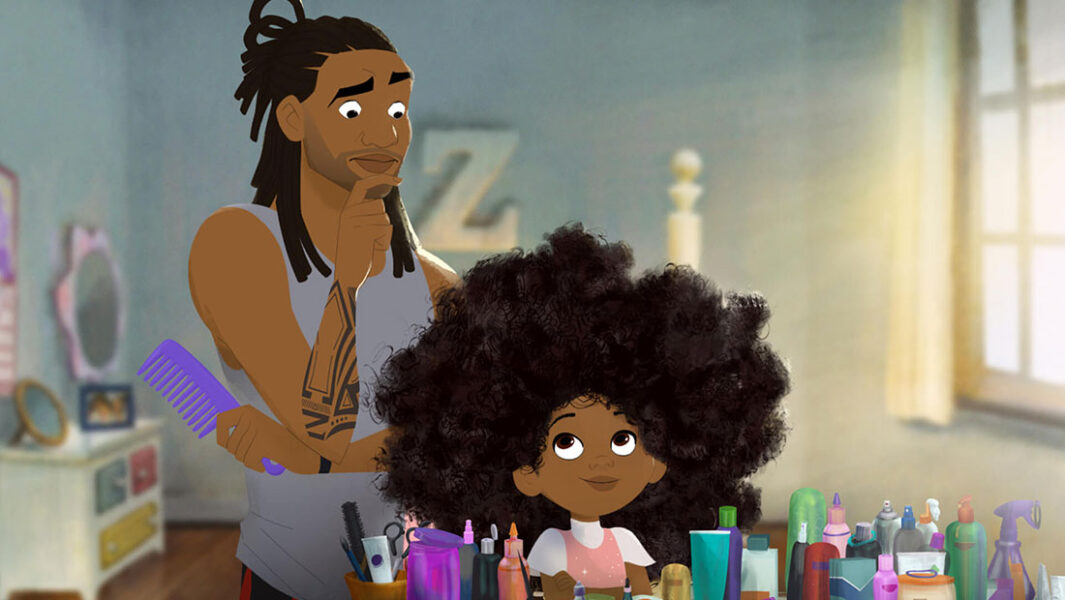
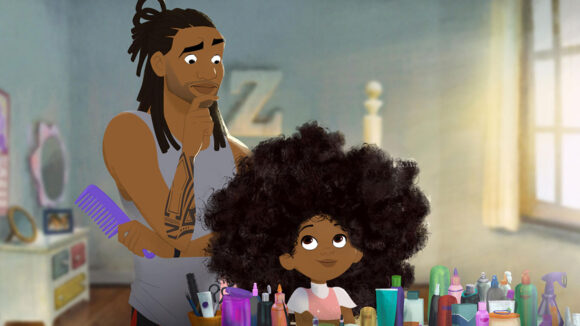
Untangling Diversity In Animation With ‘Hair Love’ Director Matthew Cherry
Last year, sixth grader Faith Fennidy was sent home because her braids violated her New Orleans school’s dress code, a week after six-year-old Florida boy C. J. Stanley was turned away from his classroom for the same reason.
These are not isolated instances; African-American children have historically faced institutional prejudice towards their hairstyles, which is reinforced throughout their lifetimes by a media and beauty industry that often fail to represent them and recognize their needs. Creator Matthew A. Cherry hopes to change narratives and inspire the next generation with his animated short, Hair Love, which was nominated for an Academy Award earlier this week.
Hair Love was released in domestic cinemas ahead of Sony Pictures Animation’s The Angry Birds Movie 2 on August 14. It began as a viral 2017 Kickstarter campaign, which raised over $284,000 against a goal of $75,000 — setting a new record for short films on the crowdfunding platform.
The animated short follows a dad who is combing through Youtube tutorials, brushing up on how to style his daughter Zuri’s afro, which seemingly has a mind of its own. Cherry tells us that he wanted to represent both African-American girls with curly hair and black dads, who often get portrayed unfairly by the media. In Zuri, he also hopes to create a heroine who looks like his young audience and normalizes their natural hair.
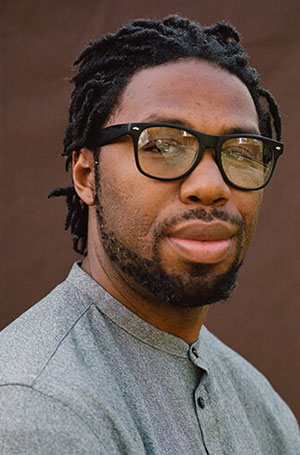
The response has been overwhelmingly positive, with Cherry recounting how people at the premiere told him this was their story. He says, “I think the main reason [Hair Love] has resonated so much with the public and media is because we all can relate to having someone we love ask us to do something we don’t know how to do. The mere act of you trying to figure that out is a way for you to show them how much you love them.”
Cherry is a former professional football player turned filmmaker, though Hair Love is the first time he’s tackled animation. He served as executive producer and co-director on the film, alongside Everett Downing (an animator on Up, WALL-E, and Brave) and Bruce Smith (creator of The Proud Family and director of Bébé’s Kids). Other EPs included Pixar animator Frank Abney and Peter Ramsey (Spider-Man: Into the Spider-Verse).
Producers included Karen Toliver of Sony Pictures Animation, who championed the project from the beginning, as well as Stacey Newton and Monica A. Young. Toliver tells us, “One of the things I love about Sony is we’re very open to exploring because people don’t know what to expect from us — and we like that.”
Initially, Cherry was worried the story would be too small for animation, given it is set in a family home as opposed to a fantastical world. To help him untangle the toon storytelling process, Cherry turned to Ramsey. He says, “I sent [Ramsey] the script right before we did the Kickstarter campaign and asked if he thought it could work in animation. He told me, ‘Animation is just a medium — I think the story could work in any medium, but the fact that you have this fantastical element about the hair having a mind of its own, it does lend itself well.'”
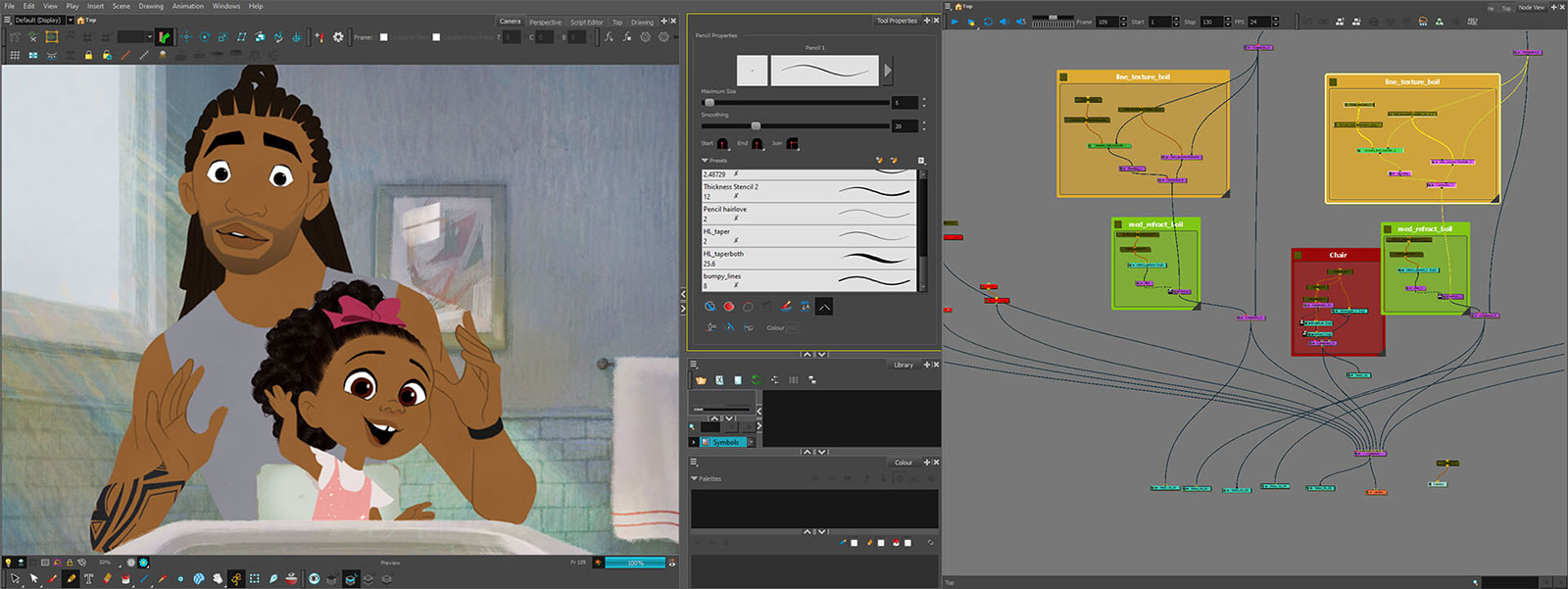
Though Cherry originally wanted to do Hair Love in 3d, he discovered he could achieve much more with his budget using 2d animation. Plus, he wanted to pay homage to the hand-drawn animation he had grown up watching. When it came time to do the animation, Cherry and Toliver turned to L.A.-based studio Six Point Harness, who produced Hair Love in a Toon Boom Harmony pipeline.
“It was a no-brainer for us — we’re always attracted to stories that are unique and new and socially relevant,” says Greg Franklin, creative director at Six Point Harness. “From a technical aspect, we had a character with voluminous hair that was very complex. As an animator, that’s a lot of details that you’ve got to track. That itself was a big technical challenge: finding ways to depict that while keeping the quality high and the effort invisible.”
Alex N. Soto, technical director at Six Point Harness, notes that though this was Cherry’s first animated film, he was very interested and involved in the production process, and offered a balance of feedback and freedom. Because he and Sony wanted a more hand-drawn aesthetic, Six Point Harness essentially had to animate Hair Love twice — all on an extremely compressed schedule.
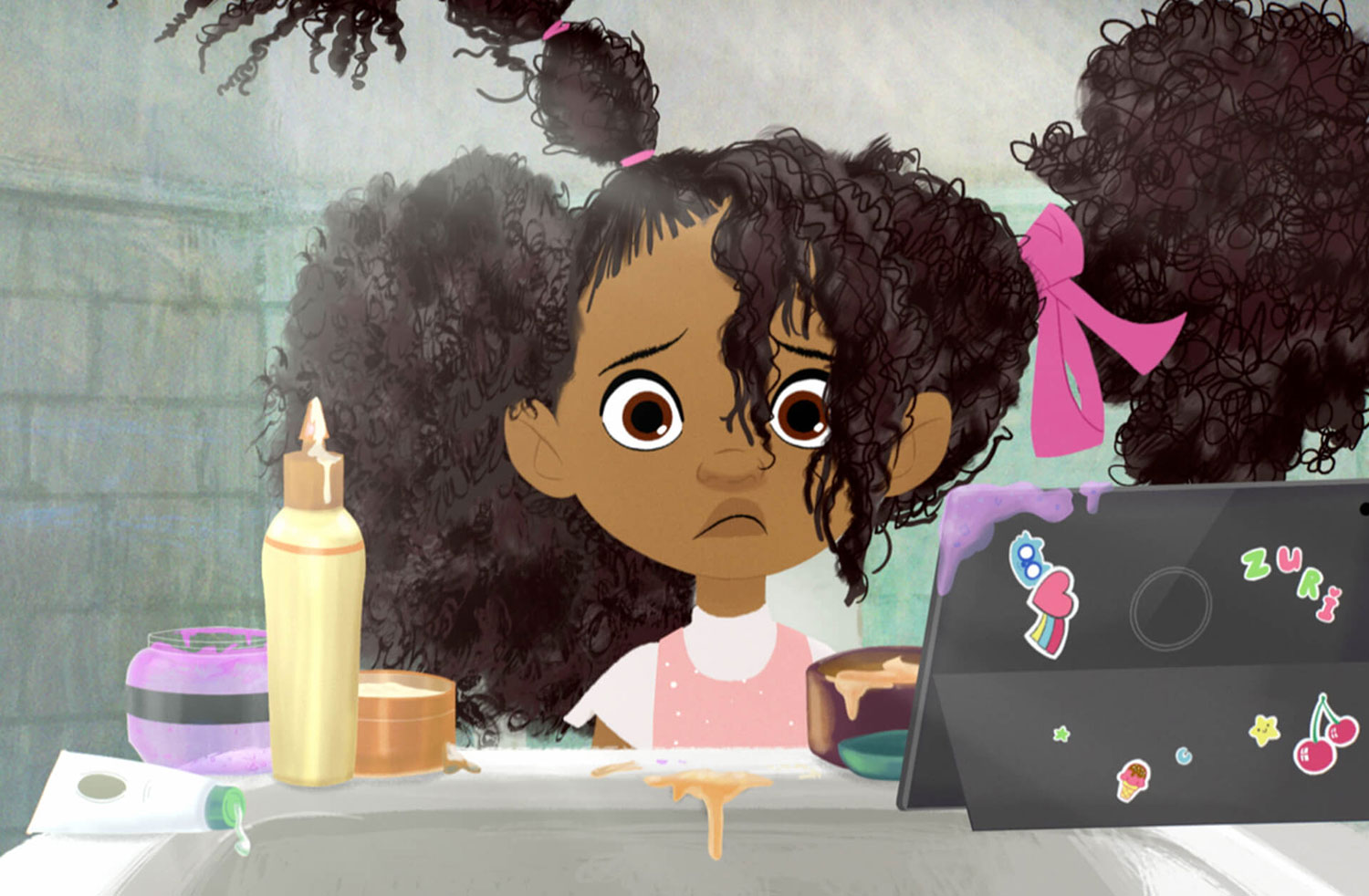
Six Point Harness’ team would traditionally animate every single shot first on paper before doing it again in Toon Boom Harmony to get the essence of the scene and have everybody on the same page. From there, they could assemble a rough-cut animation to build on.
“We were able to take that and use the Toon Boom puppets with really good rigs that were above and beyond what we’d normally use for a short film. We were even able to use rigged puppets as clean-up, which helped us keep everything on model,” says Franklin.
When asked how he developed such a thriving fanbase on Kickstarter, Cherry tells us, “As artists, we are our own brands. With social media, everybody that follows you is a potential supporter for whatever it is you want to do — be it selling artwork or making a movie. I made a conscious decision a year before launching the Kickstarter that I wanted to organically grow my following so that if I did something bigger, I’d have a bigger pool of people to pull from for support.”
His efforts paid off — the film’s buzz has been as big and beautiful as Zuri’s curls. Does Cherry feel he’s fulfilled his mission?
He says, “We wanted to provide a mirror so that young people could see themselves and do the same for black dads, who tend to get a bad rap, and show that there are young men out there with tattoos and their locks in braids that are among the best fathers in the world. I think we have done a lot to change the conversation.”
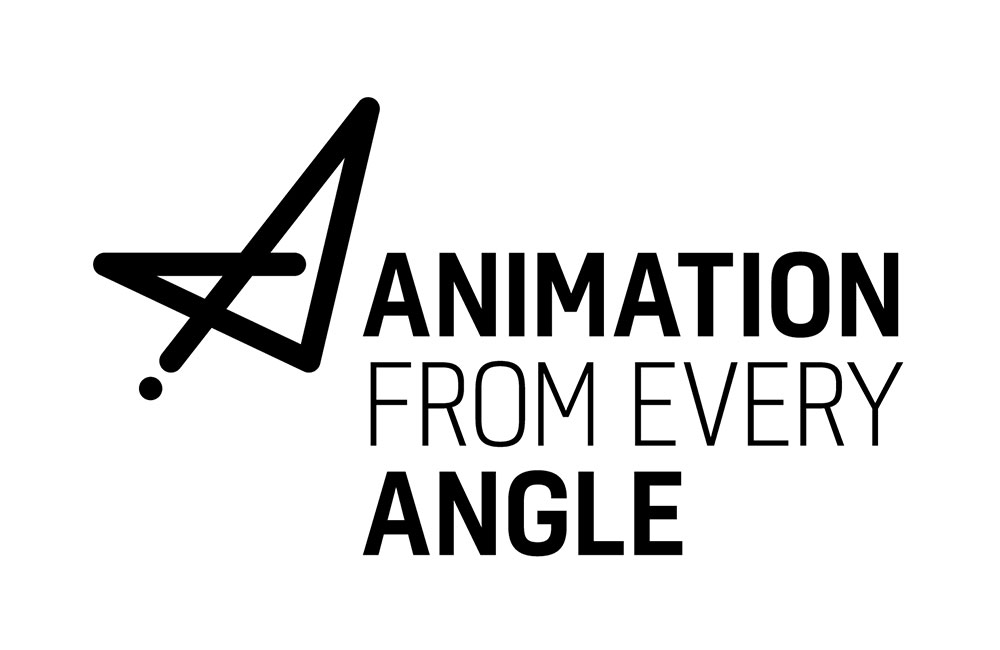
For more stories about creators who are widening the scope of animation, read AnimationFromEveryAngle.com. Toon Boom’s new publication goes in-depth on productions that boldly reach new audiences, broaden horizons and use storytelling to shine a light on underrepresented experiences.

.png)